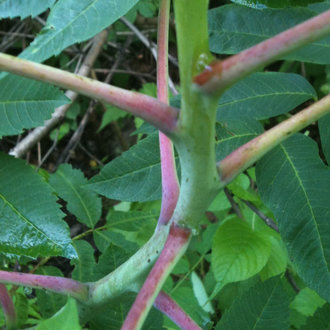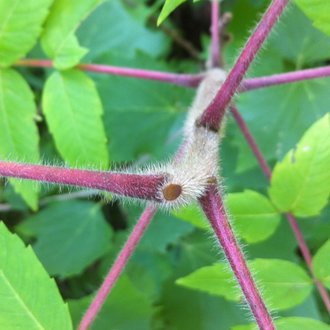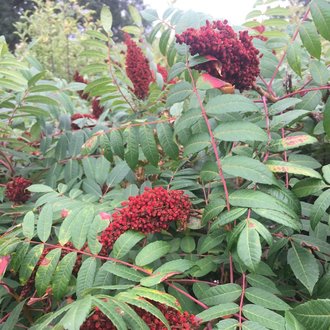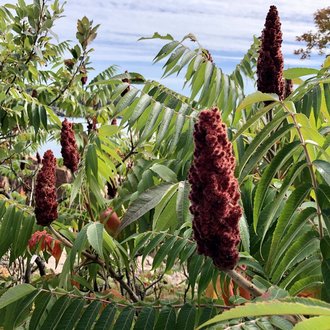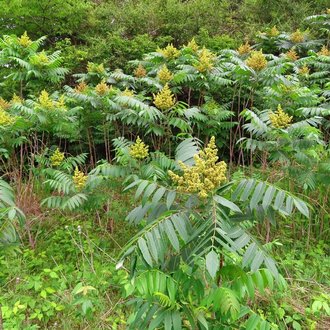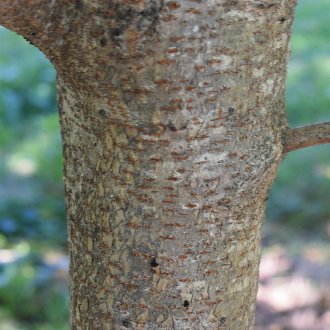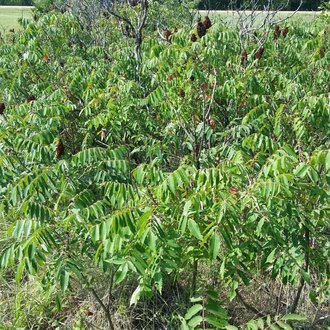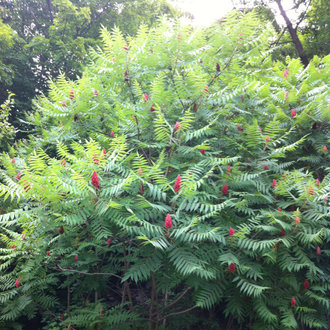Smooth Sumac vs Staghorn Sumac
Smooth and staghorn sumac are very similar in appearance and overlap both in range and habitat. They are usually easily distinguished by the presence or absence of hairs along stems, and they also have differences in growth habit and berry clusters. The two plants, however, can hybridize, so it may not be possible to identify all individuals; hybrids are especially common in the upper Midwest. Smooth sumac ranges farther west and south and tends to be found in drier habitats, whereas staghorn sumac ranges farther north.
Smooth Sumac (Rhus glabra) | Staghorn Sumac (Rhus typhina) |
A thicket-forming, drought-tolerant shrub or small tree, native to a wide range across North America. | A thicket-forming shrub or small tree native to eastern North America; a pioneer species preferring rocky soils. |
Twigs and petioles hairless and with a pale waxy coating. Photo © botanygirl, CC BY 4.0. | Twigs and petioles densely hairy. Photo © Charlie Hohn, CC BY 4.0. |
Fruit clusters slightly looser, more likely to droop or lean. Photo © Alaina Larkin, CC BY 4.0. | Fruit clusters tighter, more consistently upright. Photo © Ryan Kurtz, CC BY 4.0. |
Smaller average and maximum size, both height and trunk diameter. Tends to have a shrubbier habit. Photo © Annika Lindqvist, CC BY 4.0. | Averages taller and can reach 40 feet in height; more likely to have a tree-like habit. Photo © , CC BY-SA 4.0. |
Sparser growth habit, often letting ample light through. Photo © Laura Holloway, Public Domain. | Denser growth habit, often letting less light through. Photo © charlie, CC BY 4.0. |
References & External Resources
These short lists show only links helpful for ID. For a complete list of references and resources also covering other aspects of ecology, visit the links section of the full article on each plant, which is the first entry here.



